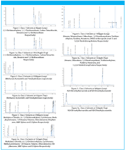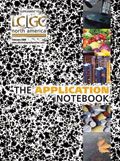Residual Solvents by HT3™ Headspace in Reference to USP <467> with a Comparison of Static Versus Dynamic Headspace Analysis
The Application Notebook
Residual solvents in pharmaceuticals are defined as volatile organic chemicals that are used or produced in the manufacture of drug substances, excipients or in the preparation of drug products. Because residual solvents do not provide therapeutic benefits, they should be removed, to the extent possible. Drug products should contain no higher levels of residual solvents than can be supported by safety data. Looking forward to the implementation of a revised USP <467> method, Teledyne Tekmar evaluated the new protocol, therefore this application will comply with the procedure and criteria changes set forth in the USP30 NF25, Second Supplement (effective December 1, 2007) and the interim revision announcement. (1)
Residual solvents in pharmaceuticals are defined as volatile organic chemicals that are used or produced in the manufacture of drug substances, excipients or in the preparation of drug products. Because residual solvents do not provide therapeutic benefits, they should be removed, to the extent possible. Drug products should contain no higher levels of residual solvents than can be supported by safety data. Looking forward to the implementation of a revised USP <467> method, Teledyne Tekmar evaluated the new protocol, therefore this application will comply with the procedure and criteria changes set forth in the USP30 NF25, Second Supplement (effective December 1, 2007) and the interim revision announcement. (1)
Instrument Parameters:
The HT3 Headspace Analyzer was connected to an Agilent 5973/6890 GC/FID system.
Standard Preparation:
Stock concentrations were formulated at the following concentrations in DMSO:
Class 1, Loop—1000ug/mL Trap—1000ug/mL
Class 2 Subset A Loop—100,000ug/mL Trap—1000ug/mL
Class 2 Subset B-C Loop—10,000ug/mL Trap—1000ug/mL
From the stock concentrations working solutions were prepared in 10mL of DI water to create the working calibration. MDL data was calculated by running replicate samples at N=10 of a 10ppb solution. Calibration and MDL data are presented in Table 1.

Table 1. Residual Solvents Calibration Data *Compounds included in standard mix but not listed in USP second supplement # Compounds not detected at low levels
Data:
Chromatography for all residual solvents investigated have excellent peak shape and response. Several stock standards where prepared containing full as well as subset target analytes at various concentrations so that the individual targets could be visibly seen without coelution. Chromatography for the standards investigated is presented in Figures 1-5.

Conclusion:
Teledyne Tekmar demonstrates that dynamic headspace can result in dramatically lower MDL's guaranteeing a better evaluation of solvents removed from formulations. With the HT3 Headspace Analyzer one robust method may be applied to a variety of residual solvents. This application is directed to the initial identification of solvents and can also be used to quantify any solvents identified.
References
(1) USP <467> Residual Solvents and USP-NF Second Supplement <467>
Teledyne Tekmar
4736 Socialville Foster Road, Mason, Ohio 45040
tel. (800)874-2004, (513)229-7000, fax (513)229-7050
Website: www.teledynetekmar.com
















